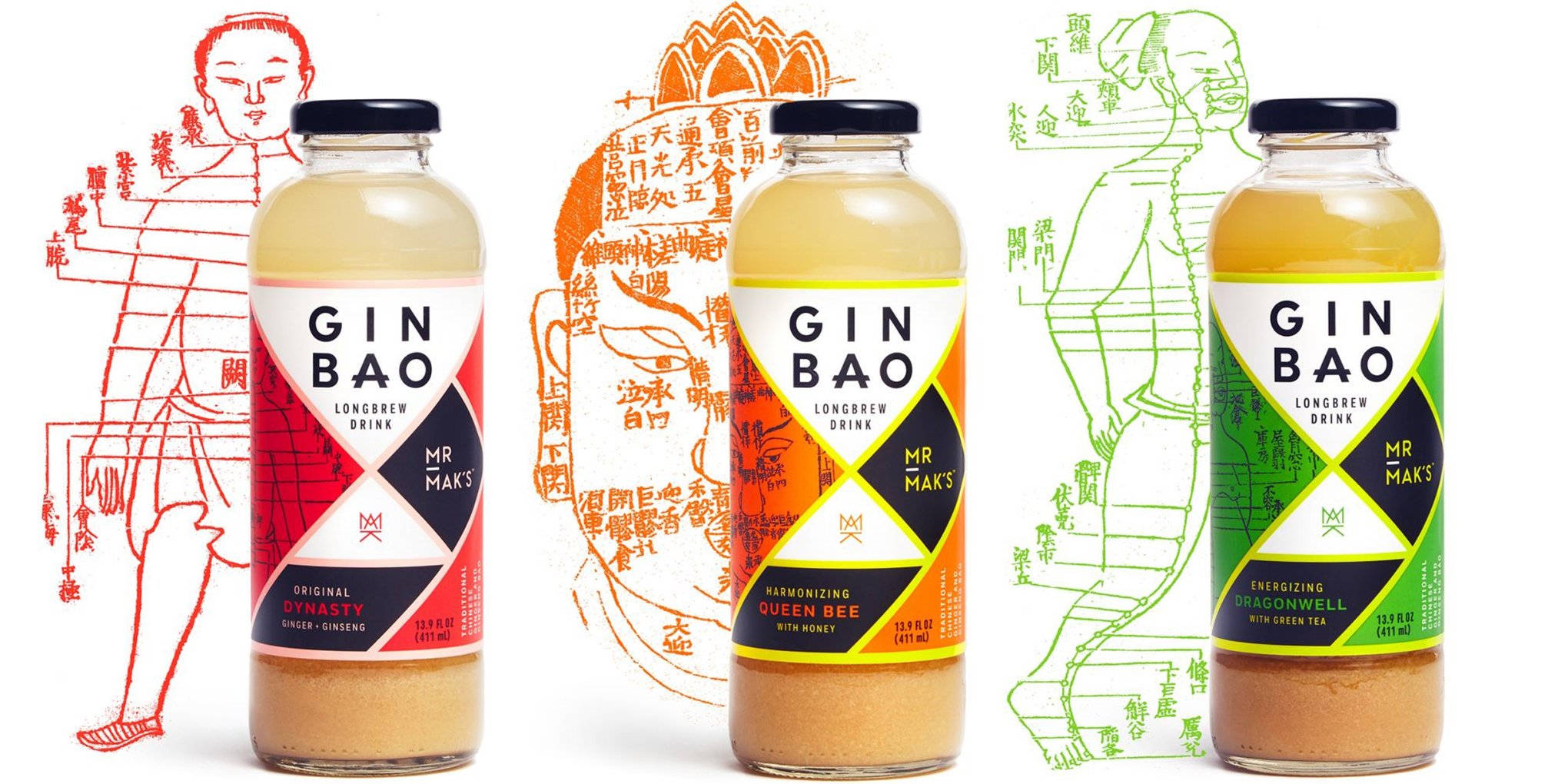If you’re an identity designer, the most critical function in the beginning of the project is research—getting to know your client’s brand inside and out, as well as the competition, and some of that involves what Sharon Werner, principal of Werner Design Werks in Minneapolis, Minn., calls “feet on the ground.” This is especially true when working on a start-up brand, like Mr. Mak’s Ginbao, a new wellness drink that is based on a traditional Chinese recipe made from natural ingredients.
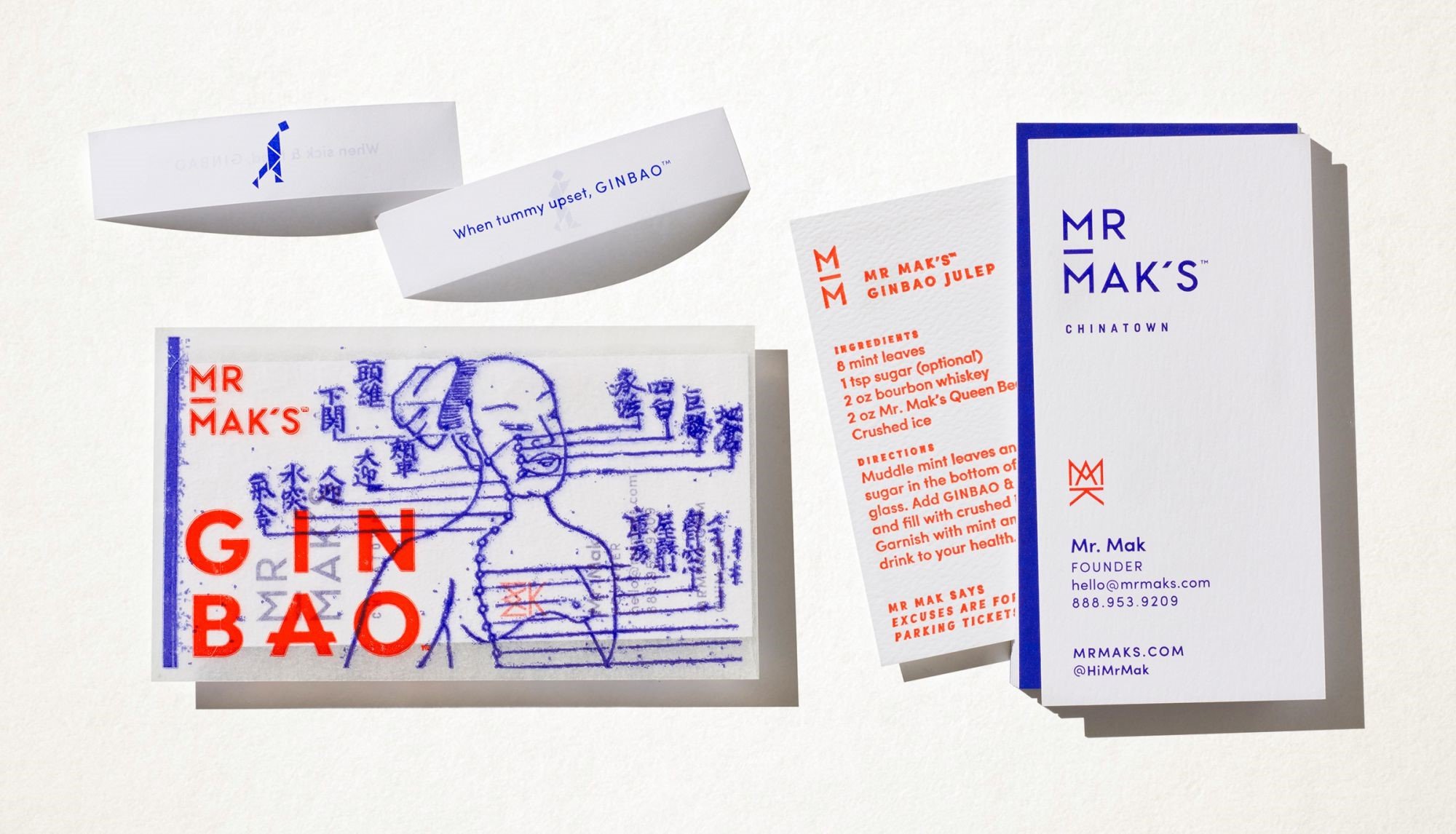
Werner and her team spent the day in New York’s Chinatown with the Mak family, even enjoying a traditional Chinese lunch prepared by Mrs. Mak. “We walked the streets of New York and looked at brands they liked and disliked in the same category,” Werner explains. “When it’s a startup we want the identity and the brand to feel true to who they are, and the only way to do that is through an intensive immersion and getting to know them. We want to understand who they are compared to their competitors; what they’ll offer that others don’t; what their personal beliefs are and how those will translate to their business and product.”
A challenge with developing brand identities for start ups is determining what will work past the first year, which is sometimes hard for clients to envision. “We’re building for a future, which means we’re asking the ‘what if’ questions—What if you add more flavors? What if you add 100 employees? What if you sell the company?” she says. “We want to build an identity that can grow with them and is fluid enough to adapt if the ‘what if’ becomes ‘What do we do now?’”
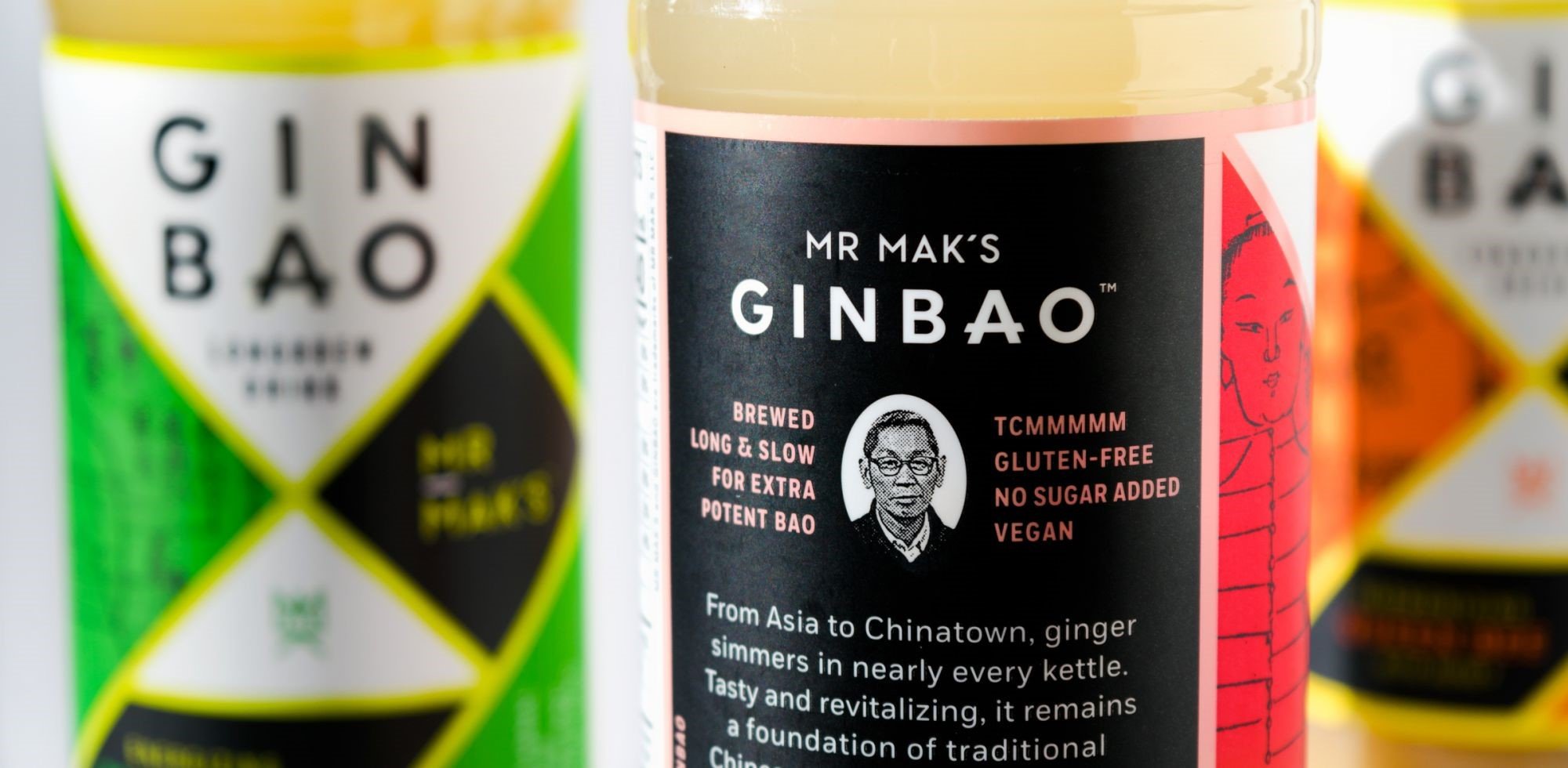 Combining traditional aesthetics with modern design elements, helped differentiate Mr. Mak’s Ginbao. The packaging utilized colors associated with the flavors, while the corporate identity was limited to neon red and porcelain blue. The letterpress printed business cards come in a glassine envelope which also houses a nice surprise for recipients—a recipe card and fortune. These small touches, tie the identity back to the brand story.
Combining traditional aesthetics with modern design elements, helped differentiate Mr. Mak’s Ginbao. The packaging utilized colors associated with the flavors, while the corporate identity was limited to neon red and porcelain blue. The letterpress printed business cards come in a glassine envelope which also houses a nice surprise for recipients—a recipe card and fortune. These small touches, tie the identity back to the brand story.
Taking a critical look at the competition and how your brand measures up, is key in the identity design. Werner and her team go to the store see the competition live on the shelf, in the environment. They look at how the retail lighting might affect packaging and how the height of the product will look sitting next to others. “We are avid and intuitive consumers— we trust our intuition. We look outside the categories to see where to go next, keeping in mind that it still has to communicate what the product is,” she notes. “With Mrs. Meyer’s, we asked how we could make it look like a hard-working, effective cleaning product, but different than its competitors. We borrowed from the utilitarian, hard-working, hardware vernacular and then softened it with color and line drawings.”
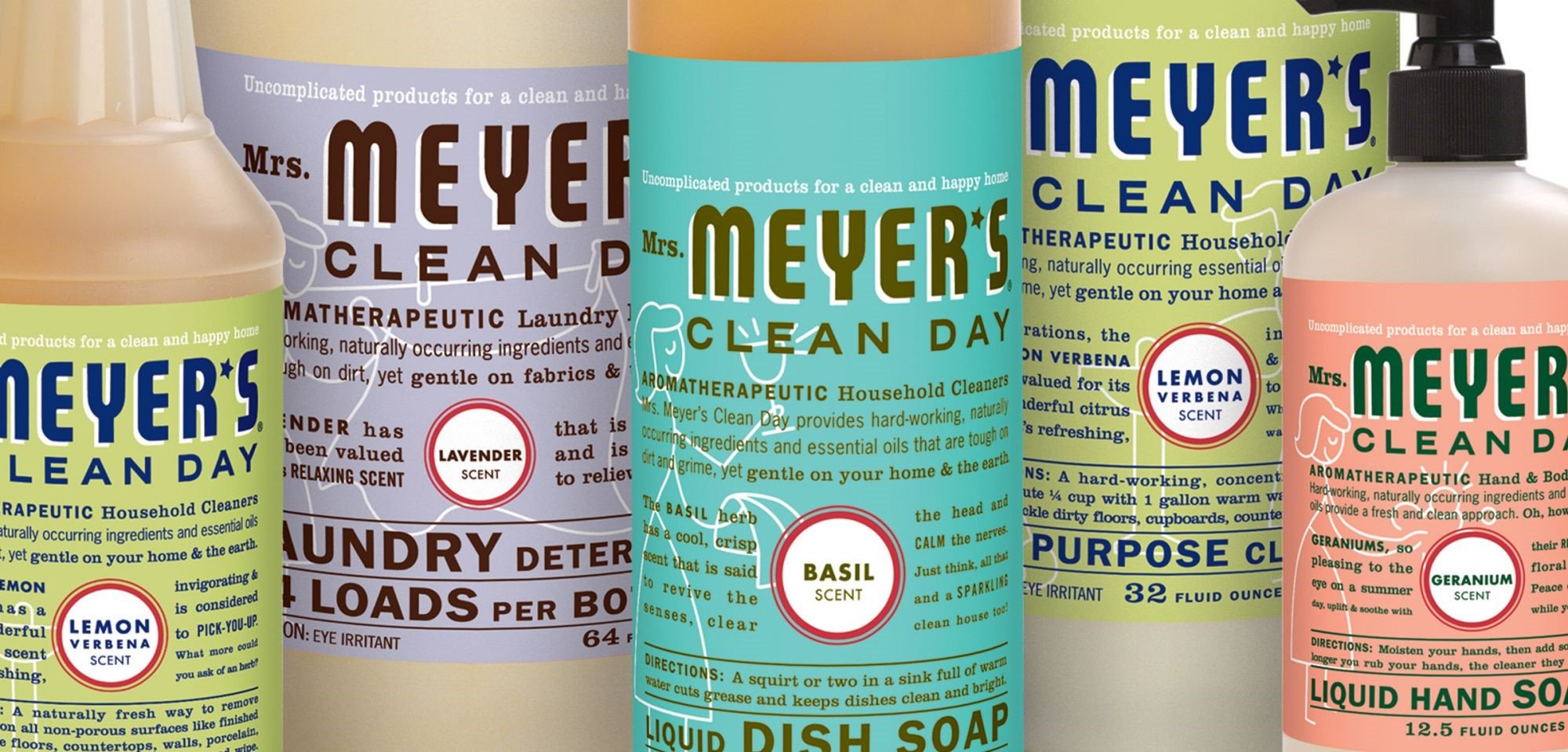
Werner developed the Mrs. Meyer’s brand story 18 years ago, and it has stood the test of time. The brand story revolves around the founder’s mother, Thelma Meyer, a homemaker from Granger, Iowa. The no-nonsense design reflects her personality and informs consumers of the natural ingredients in the cleaner. “With Mrs. Meyer’s we were involved for many years, hands on,” Werner says. “We helped them hire their first internal designer, then we later briefed their new ad agency on the brand. When they were purchased by SC Johnson, we conducted a full retrospective briefing of the Mrs. Meyer’s brand language and elements. We outlined what was brand right and not brand right and the reasoning behind that. Always bouncing decisions against ‘What would Thelma do?’”
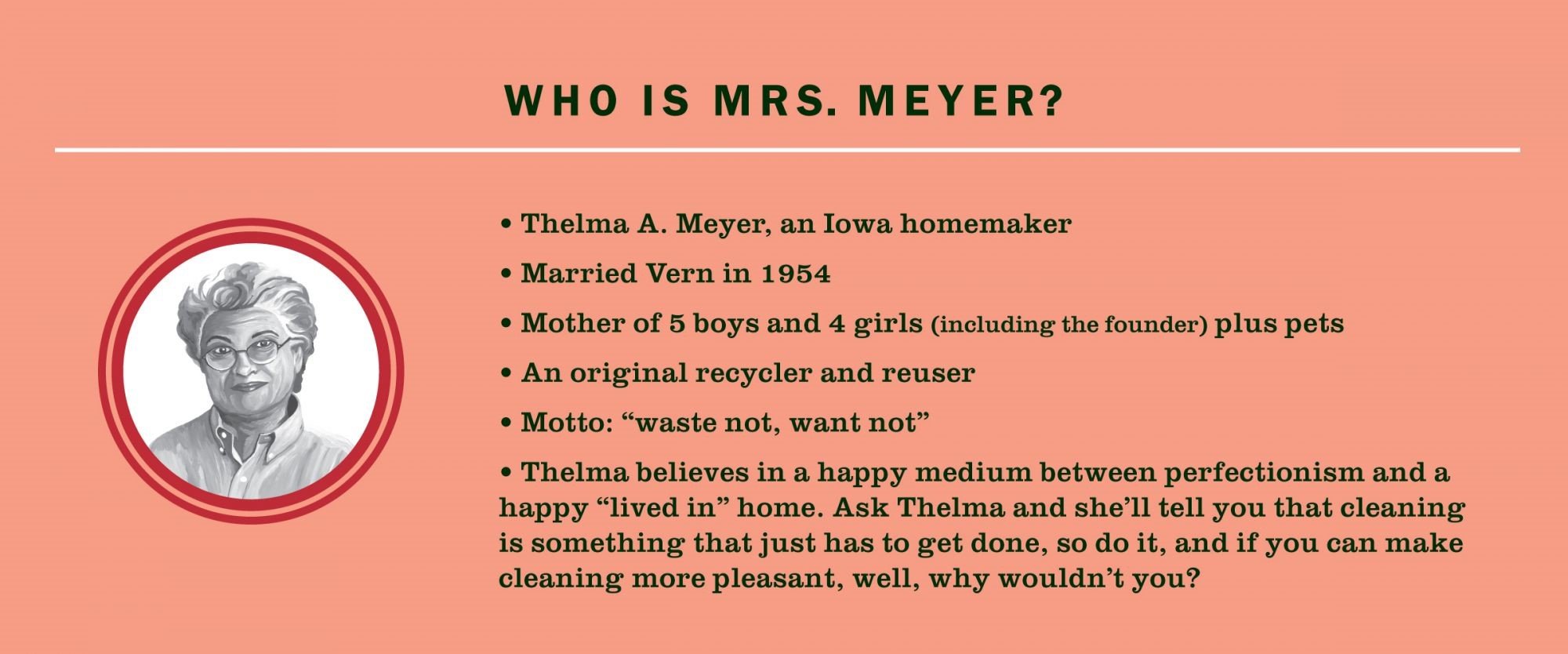
The ultimate goal when creating an identity design for a company, is to make sure all the brand assets will be managed by the client after the project is complete. This usually entails creating a style guide to ensure the identity is properly applied in every application including packaging, advertising, website, social media, and beyond. “Our goal is to create a brand and brand assets that basically eliminates the need for Werner Design Werks. We develop a brand language that can evolve and grow and still be ‘brand right,’” Werner explains.

